Everything you need to know about the Samsung Galaxy S21


Read in other languages:
The Samsung Unpacked event is over and with the live stream ending, the Galaxy S21 is finally official. The new lineup of flagship phones consists of the standard S21, the S21 Plus, and the S21 Ultra. Here's everything you need to know.
In the following table, I have summarized the individual features of the devices:
Galaxy S21, S21 Plus and S21 Ultra in detail:
| Model | Galaxy S21 5G | Galaxy S21 Plus 5G | Galaxy S21 Ultra 5G |
|---|---|---|---|
| Processor | Samsung Exynos 2100: 5nm 64-bit octa-core processor |
Samsung Exynos 2100: 5nm 64-bit octa-core processor |
Samsung Exynos 2100: 5nm 64-bit octa-core processor (more in Exynos news) |
| Memory (RAM / internal) | 8GB / 128 GB 8GB / 256 GB |
8GB / 128 GB 8GB / 256 GB |
12GB / 128GB 12GB / 256GB 16GB / 512GB |
| Expandable storage | No | No | No |
| Dual SIM | Yes (SIM1 + SIM2 or SIM1 + eSIM) | Yes (SIM1 + SIM2 or SIM1 + eSIM) | Yes (SIM1 + SIM2 or SIM1 + eSIM) |
| Display | 6.2-inch Dynamic AMOLED display with punch-hole notch / FHD+ (2400 x 1080 pixels) at up to 120Hz / max 1,300 nits / 421 ppi / no curved display | 6.7-inch Dynamic AMOLED display with punch hole notch / FHD+ (2,400 x 1,080 pixels) at up to 120 Hz / maximum 1,300 nits / 394 ppi / no curved display | 6.8-inch Dynamic AMOLED display with punch-hole notch / WQHD+ (3,200 x 1,440 pixels) / up to 120 Hz / maximum 1,500 nits / 515 ppi / curved display |
| Size | 151.7 x 71.2 x 7.9 millimeters | 161.5 x 75.6 x 7.8 millimeters | 165.1 x 75.6 x 8.9 millimeters |
| Weight | approx. 169 grams | approx. 200 grams | approx. 227 grams |
| Connectivity | 5G, LTE, WLAN 802.11 a/b/g, Wi-Fi 6E, Bluetooth 5.0, USB Type-C, NFC, GPS | 5G, LTE, WLAN 802.11 a/b/g, Wi-Fi 6E, Bluetooth 5.0, USB Type-C, NFC, GPS | 5G, LTE, WLAN 802.11 a/b/g, Wi-Fi 6E, Bluetooth 5.0, USB Type-C, NFC, GPS |
| Main camera | 12 megapixels at 1/1.76" at f/2.2 | 12 megapixels at 1/1.76" at f/2.2 | 108 megapixels at 1/1.33" at f/1.8 |
| Ultra wide angle | 12 megapixels at 1/ 2.55" at f/2.2 | 12 megapixels at 1/ 2.55" at f/2.2 | 12 megapixels at 1/ 2.55" at f/2.2 |
| Tele | 3x with 64 megapixels at 1/1.72" at f/2.0 | 3x with 64 megapixels at 1/1.72" at f/2.0 | 3x with 10 Megapixel on 1/ 3,24" at f/2.4 |
| Telephoto | - | - | 10x with 10 megapixels on 1/ 3.24" at f/2.9 |
| Selfie camera | 10 megapixels on 1 /3.24" at f/2.2 | 10 megapixels at 1 /3.24" at f/2.2 | 40 megapixels at 1/ 2.8" at f/2.2 |
| Video | max. 8K video at 24 fps | 8K max. video at 24 fps | max. 8K video at 24fps |
| Camera Features | 30x Space Zoom, 8K Video Snap, Motion View, Director's View | 30x space zoom, 8K Video Snap, Motion View, Director's View | 100x Space Zoom, Hybrid Optical Zoom, 8K Video Snap, Motion View, Director's View |
| Battery capacity | 4,000 mAh | 4,800 mAh | 5,000 mAh |
| Charging Tech | Fast charging at 25 watts, wireless charging at 15 watts | Fast charging at 25 watts, wireless charging at 15 watts | Fast charging at 25 watts, wireless charging at 15 watts |
| Unlocking | Enhanced under-display fingerprint sensor, facial recognition | Enhanced under-display fingerprint sensor, facial recognition | Enhanced under-display fingerprint sensor, facial recognition |
| Audio | Stereo speakers | Stereo speakers | Stereo speakers |
| Materials | Gorilla Glass on front, polycarbonate on back | Gorilla Glass Victus on front and back | Gorilla Glass Victus on front and back |
| OS | Android 11 with Samsung UI 3.1 | Android 11 with Samsung UI 3.1 | Android 11 with Samsung UI 3.1 |
| Compatibility with S-Pen | No | No | Yes, thanks to additional Wacom layer in the display |
| Charger included | No | No | No |
| Price | £849 | £999 | £1,199 / £1,399 |
| Release | 29 January 2021 | 29 January 2021 | January 29th, 2021 |
So you can compare the new Galaxy devices, let's go into more detail.
Processor: Exynos 2100 should minimize the gap to Snapdragon
In the run-up to any launch of the Galaxy S series, there is speculation about the processor used. This is partly because US models have had Snapdragon processors in recent generations, giving them a performance advantage.
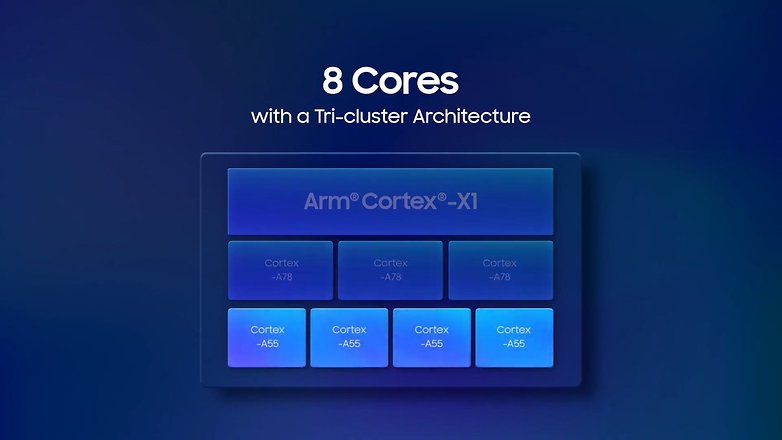
While this is also the case this year, Samsung claims to have minimized the performance advantage of Snapdragon processors. The Exynos 2100 SoC used combines a Cortex X1 high-performance core clocked at 3.9 gigahertz, as well as three Cortex-A78 cores clocked at 2.8 gigahertz each, and four Cortex-A55 cores clocked at 2.2 gigahertz each. Also integrated into the chip is a more powerful NPU, a Mali G78 MP144 GPU, and a 5G modem.
Memory: Samsung drops micro SD support
As you can see from the table, Samsung offers its new smartphones with a maximum of 512 GB of storage. The manufacturer has dropped the option of expanding the memory via micro SD cards in all devices. This could be problematic, especially when shooting the large 8K videos.
The Galaxy S21 and Galaxy S21 Plus each offer 8 GB of RAM, while the Galaxy S21 Ultra uses 12 GB or 16 GB of RAM. If you opt for the most expensive Ultra model, you get a bit more RAM - but we already know that from the predecessor Galaxy 20 Ultra.
Display: 120 Hz at WQHD+
Samsung sets a new display record in the Galaxy S21 Ultra. This is because it is the first smartphone on the market to support a high refresh rate of 120 Hz even at WQHD+ resolution, i.e. at 3,200 x 1,440 pixels. Thus, the display should be particularly sharp and smooth. However, since this also consumes a lot of power, the frame rate is variable in all devices.
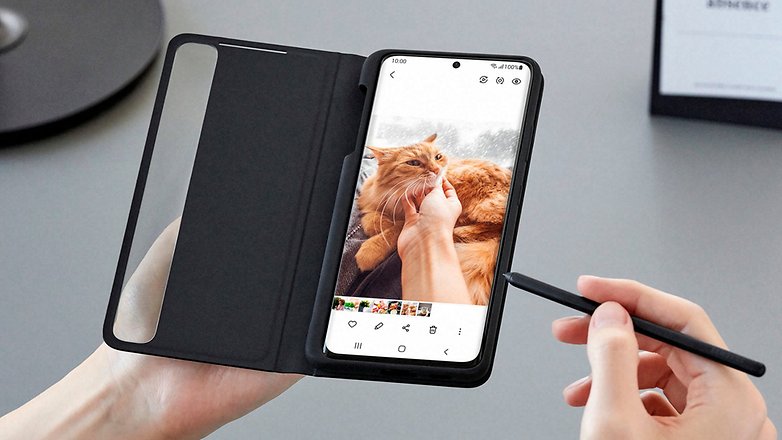
The high frame rate is also offered on the two smaller models. Here, however, the resolution is limited to FHD+. The display in the Ultra model is also a notch brighter than those of the sister models at 1,500 nits. Furthermore, only this model has a Wacom layer that enables compatibility with the S-Pen, and only here can you benefit from the advantages (or disadvantages?) of a curved display.
Camera: 108 megapixels with two telephoto lenses
The Galaxy S21 and Galaxy S21 Plus both use triple cameras on the back. The exact specifications can be found in the table above. I would like to focus on the differences to the Galaxy S21 Ultra. Fundamentally, Samsung is on par with Apple in one aspect: the new Galaxy models support RAW images with a bit depth of 12 bits.
That's because Samsung is using an improved version of the 108-megapixel sensor from the Galaxy Note 20 Ultra, which was released last year. The new sensor is said to be able to capture 64 times more vibrant colours and offer three times more dynamic range. The sensor also supports pixel binning, combining image information from nine pixels into one pixel. The output images thus resolves at 12 megapixels.
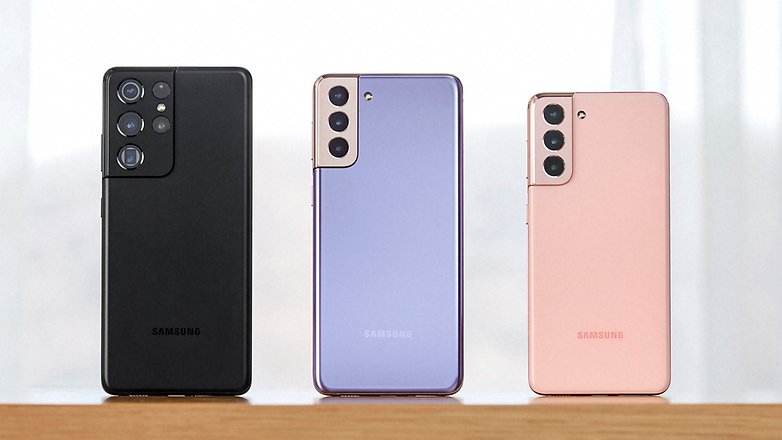
What's also exciting about the Ultra model's camera is that it has two sensors with telephoto optics. The first sensor is a 10-megapixel and offers a triple zoom compared to the wide-angle sensor. The second sensor magnifies the subject ten times compared to the wide-angle sensor. However, here the lens speed also drops to f/2.9, while it is f/2.4 on the first telephoto lens.
Camera features: extract 8K images from videos
In addition to technical improvements, the new Galaxy models also bring new camera modes, some of which are innovative and some of which are already found in devices from other manufacturers. The '8K Video Snap' mode automatically extracts images with a resolution of 7,680 x 4,320, which corresponds to about 33 megapixels, from an 8K video. For Samsung's Single Take mode, the time limit has been increased from 10 to 15 seconds.
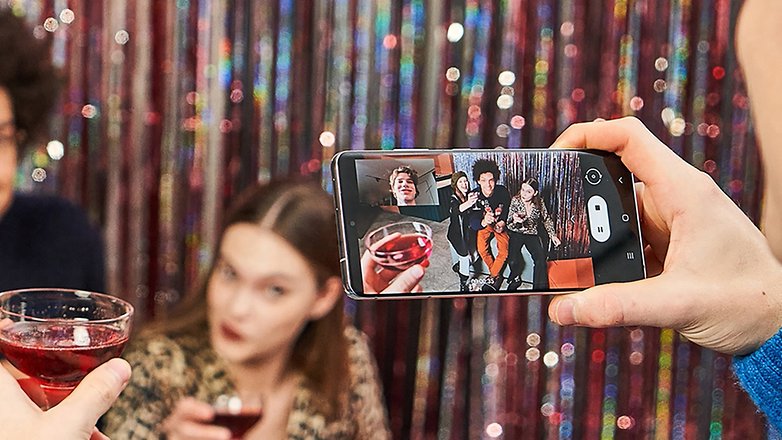
You can also work with several cameras at the same time in Director's View. This is a special video mode that also shows the image sections of the other sensors during video recordings. While this doesn't record all cameras at the same time, in order to find better angles of view, the mode could still come in handy.
In addition to the new features, Samsung also claims to have improved the well-known Space Zoom. In addition to a higher sharpness, the 'Zoom-Lock' function should also help with the image cropping. Here, the smartphone first zooms in just a bit, and from there you can choose a tighter frame.
The last new feature Samsung introduced is the 'Dual View' function. Here, the phone shoots with the front camera and the rear camera at the same time. A new feature for Samsung that Apple, for example, has had since the iPhone 11.
Battery, fast charging and power adapters: No, no power adapter included
You'll find the largest battery capacity in the Samsung Galaxy S21 Ultra, which offers a large 5,000 mAh battery. However, since the phone also has a larger display with a higher resolution, the battery life shouldn't be significantly larger. The battery of the Galaxy S21 measures 4,000 mAh, in the Galaxy S21 Plus it is 4,800 mAh.
However, the question of how these batteries are charged is more exciting. All three smartphones support Samsung's fast charging technology, which operates at a maximum of 25 watts. That is not particularly impressive compared to manufacturers like Oppo or Xiaomi, since some of them already have charging technologies that work with over 100W. Wireless charging is also faster elsewhere with only 15 watts of power.
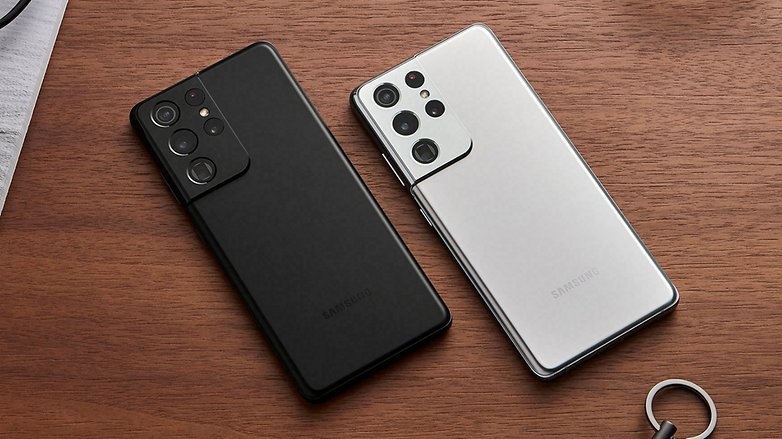
However, Samsung fans were eagerly waiting to see if the manufacturer would follow Apple's and Xiaomi's examples and make the chargers optional. The answer: yes! None of the devices come with a power adapter in the box, and Samsung said that according to market analysis, the company can thus avoid 29,000 tons of electronic waste per year.
In addition, Samsung can lower the price of the models. Compared to the previous models, the Galaxy S21 is £30 cheaper and the Ultra model is £50 cheaper.
S-Pen: Exclusive to the Galaxy S21 Ultra
The S-Pen has indeed found its way into the Galaxy S series and is no longer reserved for buyers of the Note models. However, to use the S-Pen, you'll have to opt for the Ultra model and preferably a case to go with it. Because there will be no storage space for the S-Pen in the actually Galaxy S21 Ultra.

Instead, Samsung offers cases to which you can attach the stylus. The S-Pen is more like a conventional ballpoint pen, as it is significantly larger and thicker than the S-Pen in the Galaxy Note 20, for example. However, you will have to do without the practical functions for controlling PowerPoint presentations or taking photos. The S-Pen of the Galaxy S21 Ultra does not offer Bluetooth connectivity - but it does not need to be charged either.
Materials, price and colours
If you don't like smartphones with a plastic back - Samsung prefers to call it polycarbonate - you should refrain from buying the Galaxy S21. Only the Plus and Ultra models use the latest Gorilla Glass Victus on the back. The colours of both the plastic and the glass versions are all matte.
Samsung calls these Phantom Gray, Phantom White, Phantom Pink and Phantom Violet this year. These colours are also available for the Plus model, but there is also a pink and a gold colour variant exclusively in Samsung's online shop. The Ultra model comes in the exclusive colours of Titanic Navy and Brown, while only Phantom Silver and Phantom Black are available as standard.
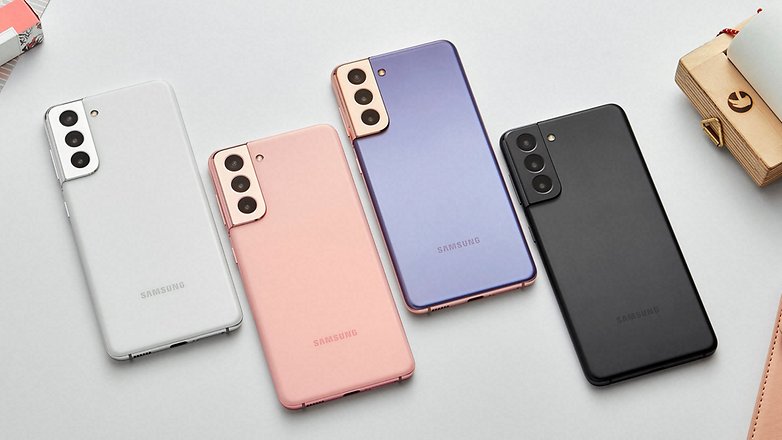
Since the prices are quite confusing, I have again compiled a shortlist for you:
Galaxy S21:
- £849 (8GB/128GB)
Galaxy S21 Plus:
- £999 (8GB/128GB)
Galaxy S21 Ultra:
- £1,199 (128GB/12GB)
- £1,399 (16GB/512GB)
You can pre-order all the devices from today (14 January). Officially, the devices will go on sale on January 29 - since all devices already offer 5G support ex-factory, there won't be any additional versions.
Pre-orderers who buy between January 14 and January 29, will get bonuses like free smart tags or true wireless headphones for free. As soon as Samsung reveals the exact terms for pre-orderers, I'll add them to this article.











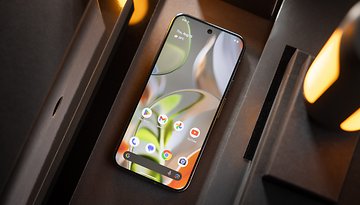





At this price, the performance could be even better.
-
Admin
-
Staff
Jan 15, 2021 Link to commentYes, I agree. Although Samsung lowered the prices the S21s updates are too minor – and the Ultra-Model is too expensive still.